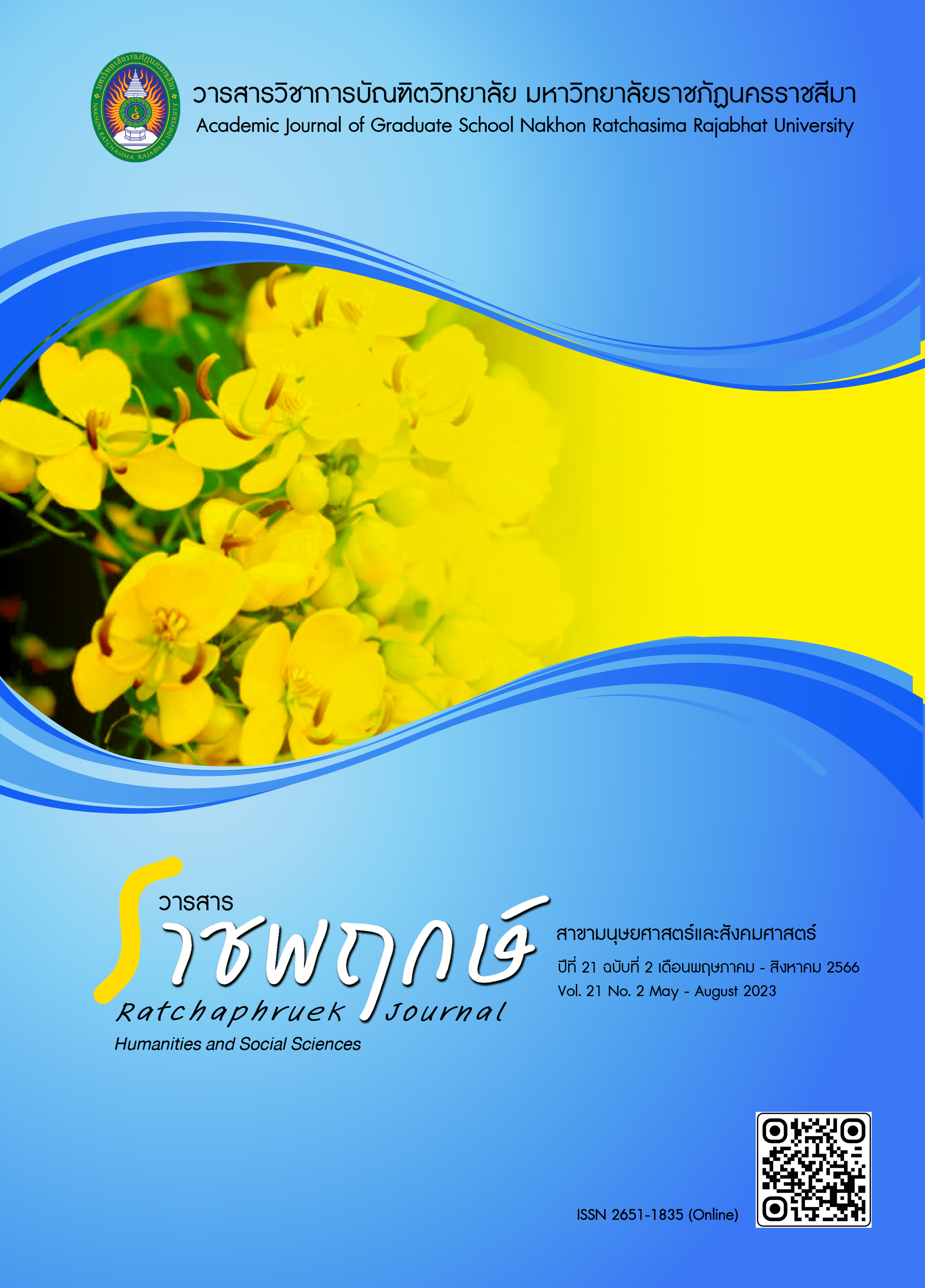Development of Physical Self-Concept Inventory Thai Version
Main Article Content
Abstract
The purpose of the study was to develop the Physical Self-Concept Inventory (PSCI) into Thai version. The PSDQ consisting of 70 items and 11 components were translated into Thai version by the researcher and the experts. The 430 high school students in the age range 13-18 years under Bangkok metropolitan administration subject were selected through multistage random sampling. The reliability and validity of the PSCI in Thai version were determined by Cronbach’s alpha coefficient and confirmatory factor analysis (CFA). Data were analyzed by frequency, percentage, Cronbach’s alpha coefficient, and factor analysis.
The results of the study showed that the reliability of the PSCI was at the high level (r=0.88). The validity of PSCI was structurally valid and consistent with empirical data at a good level. Therefore the PSCI in Thai version was valid and reliable instrument, and it can be used to further study and develop physical self-concept.
Article Details

This work is licensed under a Creative Commons Attribution-NonCommercial-NoDerivatives 4.0 International License.
References
กลุ่มงานนโยบายและแผนการศึกษา สำนักยุทธศาสตร์การศึกษา. 2561. รายงานสถิติการศึกษา ปีการศึกษา 2561 โรงเรียนสังกัดกรุงเทพมหานคร. กรุงเทพฯ: โรงพิมพ์จุฬาลงกรณราชวิทยาลัย.
จุไรรัตน์ ทองคำชื่นวิวัฒน์. (2563). การพัฒนาอัตมโนทัศน์กับความรู้สึกเห็นคุณค่าในตนเองของเยาวชนไทย. วารสารสถาบันวิจัยและพัฒนา มหาวิทยาลัยราชภัฏสมเด็จเจ้าพระยา, 5(2), น. 134-147.
ฉัตรกมล สิงห์น้อย. (2556). การพัฒนาแบบสอบถามทางจิตวิทยาการกีฬา. วารสารวิทยาศาสตร์และเทคโนโลยีการกีฬา, 13(2), น. 127-143.
วรรณี เจิมสุรวงศ์. (2564). “พลังบวก” กับการออกกำลังกายและกีฬา. วารสารศึกษาศาสตร์ มหาวิทยาลัยศิลปากร, 19(2), น. 145-153.
สมพงษ์ กฤตธรรมากุล. (2556). แนวทางการปรับปรุงระบบการสัญจรเพื่อส่งเสริมกิจกรรมทางกายของเมืองตรัง (วิทยานิพนธ์มหาบัณฑิต, จุฬาลงกรณ์มหาวิทยาลัย).
สุพันธ์ อุ่นใจ และบุษบา สมใจวงษ์. (2559). การแปลและการตรวจสอบคุณภาพของการประเมินความต้องการดูแลแบบสนับสนุนสำหรับผู้ป่วยมะเร็งปากมดลูก. วารสารพยาบาลศาสตร์และสุขภาพ, 39(3), น.119-126.
Hentati, A. & Elloumi, A. (2013). Tunisian validation of measuring instrument: Physical Self-Description Questionnaire (PSDQ). Journal of Humanities and Science, 11(1), pp. 79-88.
Brislin, R. W. (1987). Back-translation for cross-cultural research. Journal of Cross-Cultural Psychology, 1(3), pp. 185-216.
Craven, R. G., & Marsh, H. W. (2008). The centrality of the self-concept construct for psychological wellbeing and unlocking human potential: Implication for child and education psychologist. Educational & Child Psychology, 20, pp. 104-118.
Fernández-Bustos, J. G., Infantes-Paniagua, Á., Cuevas, R., & Contreras, O. R. (2019). Effect of Physical Activity on Self-Concept: Theoretical Model on the Mediation of Body Image and Physical Self-Concept in Adolescents, Frontiers in Psychology, 10(1537), pp. 1-10.
Johan, S. & Tine, V. D. (2019). The long and short form of the physical self-description questionnaire: Psychometric properties in an adolescent sample, European Psychomotricity Journal, 11(1), pp. 51-69.
Hair, J. F., Black, W. C., Babin, B. J. & Anderson, R. E. (2019). Multivariate data analysis (8th ed.). Florida: Taylor & Frances Group.
Kim, I. & Ahn, J. (2021). The effects of changes in physical self-concept through participation in exercise on changes in self-esteem and mental well-being, International Journal of Environmental Research and Public Health, 18(5224), pp. 1-10.
Marsh, H. W. & Redmayne, R. S. (1994). A Multi-dimensional physical self-concept and its relations to multiple components of physical fitness, Journal of Sport and Exercise Psychology, 16, pp. 43-55.


